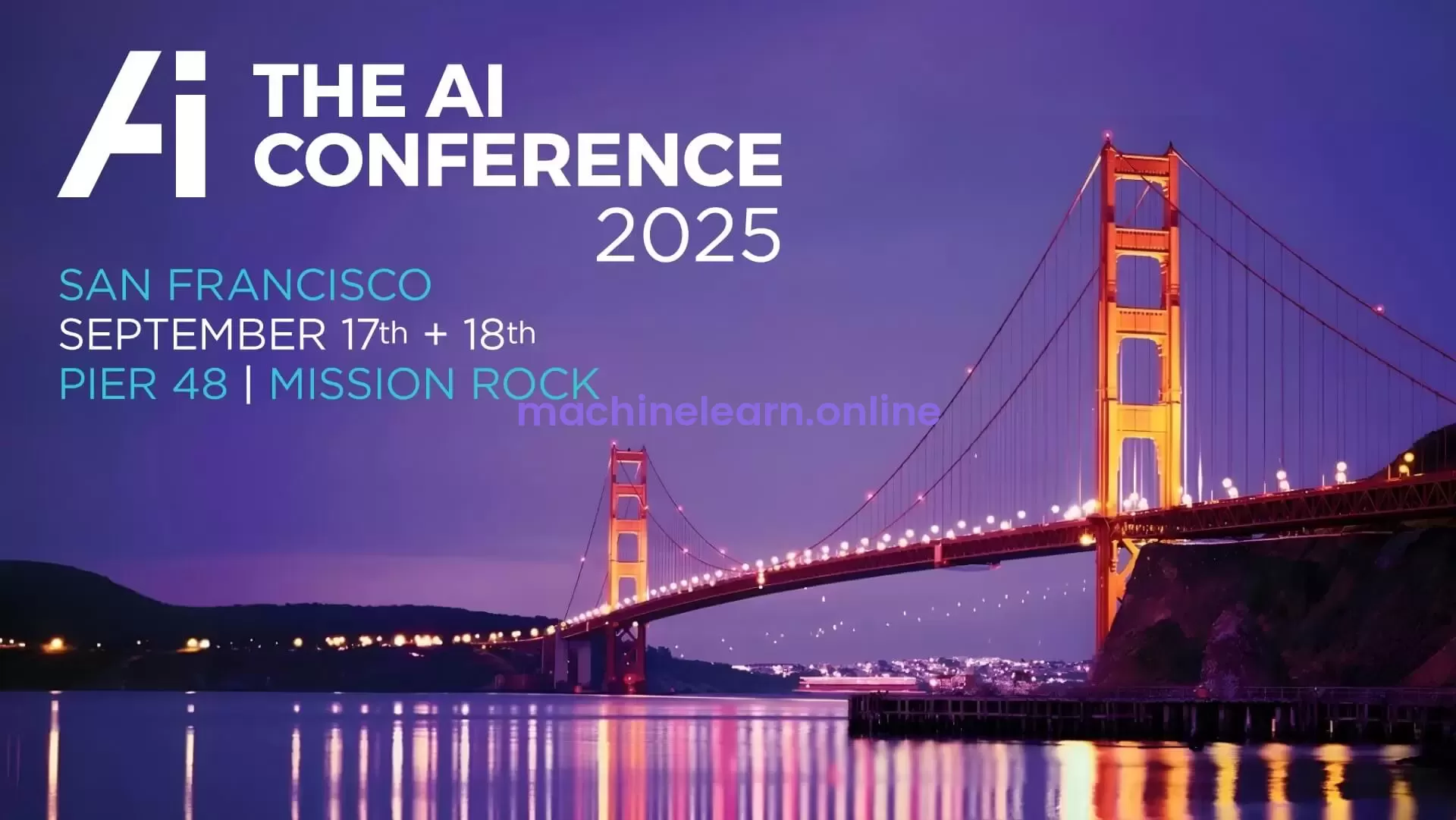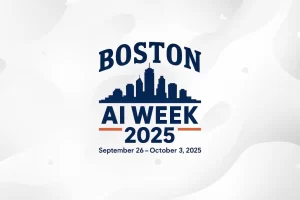The AI Conference 2025: A Practical Guide to Getting the Most Out of Two Days That Can Change Your Career

Every conference promises transformation; only a few actually deliver a mix of high-caliber talks, practical takeaways, and human connections that push work forward. The AI Conference 2025 in San Francisco — two days at Pier 48, September 17–18 — has stacked its program to offer that blend: 4 tracks, 100+ speakers, a Startup Showdown, networking mixers, and deep dives across AI engineering, strategy, and applied use cases. This article helps readers approach the event like a strategist with a schedule, not a tourist with a badge. It explains how to choose sessions, extract insights, build relationships, and return with tangible work items — not just notes.
- Why this conference matters now
- Before the conference: plan like a product manager
- During the conference: listen like an investigator, act like a connector
- Networking — quality beats quantity
- How to evaluate startups at the Startup Showdown
- Post-conference: convert heat into hard progress
- Making the content stick: how to learn faster from sessions
- How to maximize sponsor pavilion and booths
- Why the tracks are valuable for hiring and hiring managers
- Safety, governance and ethics
- How to convert inspiration into product features
- Final thoughts: Treat the conference as a catalytic event
Why this conference matters now
The conference curates focused tracks that map directly to practical roles: AI Frontiers for research and model breakthroughs, AI Developers for hands-on engineering, AI Strategy for leaders planning adoption and governance, and Applied AI for case studies across industries like healthcare and retail. That kind of explicit, role-aligned structure reduces the cognitive friction most attendees feel when deciding where to spend their time. It’s also vendor-neutral and draws speakers from large enterprises, startups, and academic institutions — a mixture that yields a broader perspective than single-vendor events.
Think of attending as gardening. You don’t plant every seed in the same bed; you pick plots, water them deliberately, and prune what won’t survive. The conference lets you plant seeds — new techniques, frameworks, contacts — but your job is to tend the ones that matter afterward.
Before the conference: plan like a product manager
A well-structured prep phase separates attendees who return energized from those who return overwhelmed.
- Define success metrics
Decide what success looks like before you arrive. Examples:
- Learn two specific techniques (e.g., LoRA fine-tuning and an LLMOps tool) and apply them to a current project within four weeks.
- Meet three potential collaborators or hiring leads and follow up within seven days.
- Validate one strategic direction for your organization (e.g., a particular generative AI use case or vendor).
Attach deadlines and acceptance criteria to each metric. Not every contact needs to convert into a deal; sometimes a concise insight that changes a roadmap is a win.
- Map sessions to outcomes
The AI Conference publishes four tracks. Use the table below to match sessions to objectives. This reduces context-switching and helps you pick the highest-impact talks.
| Objective | Recommended Track | Example Topics to Target |
|---|---|---|
| Learn model advances and safety frameworks | AI Frontiers | Multimodal models, AGI discussions, safety & governance |
| Improve deployment & MLOps skills | AI Developers | LLMOps, fine-tuning (LoRA), prompt engineering |
| Build executive-level strategy | AI Strategy | Scaling AI, regulation, ROI, investment trends |
| See real-world use cases | Applied AI | Healthcare, finance, retail case studies, agent workflows |
- Shortlist speakers and plan back-to-back sessions
Review the speaker list and click through leaders that align with your objectives. The conference lists experts ranging from Dr. Rodney Brooks to Jure Leskovec; it includes product leads and researchers. Build a shortlist of must-see keynotes and two fallback sessions for each time block. Give priority to sessions that promise demonstrations, hands-on guidance, or concrete case studies rather than meta-talk. - Build a networking plan
Identify three types of people to meet:
- Peers doing similar engineering work (swap techniques).
- Leaders in adjacent domains (identify partnership opportunities).
- Investors or recruiters if you’re launching or hiring.
Use the conference’s app channels (they mention Whova and Discord) to message people before arrival. Schedule coffee or a booth crawl during sponsor time. Treat networking like sprint planning: set objectives and time-box interactions.
During the conference: listen like an investigator, act like a connector
Conferences reward active behavior. Here are methods professionals use to convert sessions into applied change.
- Capture structured notes
Don’t rely on slides alone. Use a two-column note system:
- Left column: key claims, numbers, tool names, reproducible steps.
- Right column: immediate actions, experiments to run, people to contact.
After each session, spend five minutes refining action items. That short processing time turns passive listening into executable work.
- Ask focused questions
Panels and Q&A sections are opportunity windows. Prepare 1–2 targeted questions per session. Examples:
- “Can you describe a failure mode for that deployment pattern and how you mitigated it?”
- “What’s the smallest evaluation benchmark you used to validate production readiness?”
A sharp question does two things: it clarifies the speaker’s confidence level and showcases your expertise to other attendees.
- Prioritize applicability over novelty
Novel architectures attract attention, but practical utility wins projects. When a session covers bleeding-edge models, immediately ask: “What’s the simplest, most reliable subset of this that I can use in production next quarter?” That reframes glamour into a minimum viable increment. - Use hallway conversations strategically
Be direct. When someone introduces themselves, quickly state your role, a current challenge, and the help you seek. People appreciate clarity: “I build production LLMs for fintech; we struggle with hallucination on transaction summaries. Who here solved similar issues?” That invites targeted responses and a faster path to value.
Sessions to prioritize (based on tracks and typical impact)
- AI Developers: Hands-on talks on MLOps & LLMOps, prompt engineering, and fine-tuning techniques such as LoRA. The talks under this track map directly to deliverables — model tuning, deployment pipelines, and tracing production issues.
- AI Frontiers: Attend when you want to understand the horizon: multimodal systems, open-source compact models, and safety approaches. These talks help with long-range roadmaps and hiring decisions.
- Applied AI: Don’t skip industry case studies. The panels on healthcare and retail show how teams navigate regulation, evaluation, and domain-specific data pipelines.
- AI Strategy: Leadership teams should focus on sessions that cover scaling, regulation, ROI, and governance frameworks. These sessions often include scripts and templates for internal committees.
Networking — quality beats quantity
A conference gives you a large social surface area. The goal is to create durable connections, not collect business cards. Use a simple rubric for follow-up prioritization:
- High priority: People who can help you within 30 days (hiring, technical partnerships, pilot opportunities).
- Medium priority: People who might help within 3–6 months (mentors, advisors).
- Low priority: Interesting conversations to nurture over time (broad thought partners).
Follow the 3-step follow-up:
- Within 24 hours: send a brief message referencing the conversation and one specific next step (e.g., share a repo, propose a coffee call).
- Within one week: share an actionable artifact (notes, relevant article, or a calendar invite for a meeting).
- Within one month: report progress or results from actions you promised. Reciprocity builds momentum.
How to evaluate startups at the Startup Showdown
The Startup Showdown gives founders a concentrated window of visibility. Investors and potential partners should evaluate efficiently:
- Problem clarity: Can the team explain the problem in one sentence? If they waffle, the product likely lacks focus.
- Evidence of fit: Look for early customers, pilot results, or measurable KPIs (reduced cost, speed improvements, increased retention).
- Technical defensibility: Is there a novel model, data advantage, or integration that scales?
- Go-to-market plan: Assess distribution channels and customer acquisition cost (CAC) assumptions.
- Team resilience: Founders’ experience in the domain and ability to iterate matters more than a flashy demo.
Post-conference: convert heat into hard progress
Two things separate conference attendees who change their work from those who return with unread slides: follow-up discipline and a sprint plan.
- Convert notes into a 30-day project list
Within 48 hours, transform your session notes into a prioritized list of experiments with owners and timelines. Use the template below.
| Project | Owner | Goal (30 days) | Success Metric |
|---|---|---|---|
| Prototype LoRA fine-tune for QA agent | Alice | Build and validate on 2 datasets | F1 > baseline by X% |
| Vendor evaluation for vector DB | Bob | Shortlist 3 vendors with cost estimate | Latency < X ms & cost < $Y |
| Regulatory checklist for PII | Carol | Create checklist for production release | Compliance sign-off ready |
- Share a concise internal briefing
Send a one-page memo to stakeholders summarizing three actionable recommendations, estimated cost/time, and a proposed next step. Decision-makers respond better to clear asks than to a “conference highlight reel.” - Schedule knowledge sharing sessions
Host a brown-bag in week two. Each attendee gives a 5-minute highlights talk with one demo or one clear takeaway. That spreads value across the organization and creates accountability for follow-through. - Measure impact
Set KPIs for the next 90 days: did you ship a feature inspired by a talk, reduce inference costs, or sign a pilot partner? Track outcomes and iterate.
Common mistakes and how to avoid them
- Mistake: Trying to attend every high-profile talk. Reality: Sessions overlap. Strategy: Accept trade-offs and pick the highest-ROI session per time slot; consume other talks’ slides later.
- Mistake: Passive note-collecting without action plans. Strategy: Capture one explicit next step for each session: an experiment, a contact, or a proposal.
- Mistake: Networking without follow-up. Strategy: Send a tailored message within 24 hours and propose one concrete next step.
- Mistake: Overcommitting to swag and freebies. Strategy: Prioritize conversations over giveaways; sometimes the demo at a booth is the last place to get deep technical answers.
- Mistake: Ignoring the sponsor pavilion. Strategy: Sponsors often demo emerging tools; pick 2–3 booths aligned with your stack and ask for a short technical walkthrough.
Making the content stick: how to learn faster from sessions
Treat the conference like a short intensive course. Apply these learning boosts:
- Pre-read abstracts and slide decks when available. You’ll get more from the talk if you already understand the terrain.
- Use focused, evidence-seeking questions. Instead of “How did you build this?” ask “What metric determined this model was production-ready?”
- After sessions, synthesize three things: claim, evidence, and caveat. That triples your retention and gives you a critical frame for implementation.
- Reconstruct key demos later. If a speaker demoed a training pipeline, reproduce a simplified version in a notebook within a week.
How to maximize sponsor pavilion and booths
The sponsor area operates like a concentrated vendor evaluation day. Use it as a trial to reduce risk in vendor selection:
- Go in with a checklist: integration ease, latency, cost model, security features, and references.
- Ask for a technical contact and 30-minute trial or POC timeline.
- Negotiate pilot terms on-site: try to lock in a demo environment and a clear success metric.
- Collect collateral and schedule follow-ups for deeper technical sessions post-conference.
Why the tracks are valuable for hiring and hiring managers
The AI Conference uniquely aligns sessions by role and topic — a recruitment manager can use tracks to structure candidate interviews and skills tests. For example:
- AI Developers track talks suggest practical tasks for interviews (fine-tuning exercises, debugging pipelines).
- AI Strategy sessions highlight the frameworks that leadership candidates should discuss (scaling strategies, governance plans).
- Applied AI case studies show domain-specific evaluation metrics to test candidates’ ability to connect technology to business value.
Use the conference as a shortlisting tool: identify speakers and attendees you want to recruit. Follow up quickly; the post-conference window is when interest converts into conversations.
Safety, governance and ethics
The conference lists AI Safety & Governance, Ethics and Alignment among central topics. Conference sessions on these subjects often include frameworks and templates for responsible rollouts. When attending these panels, look for:
- Concrete governance artifacts (checklists, audit templates, incident response plans).
- Measurable fairness metrics and how teams integrate them into pipelines.
- Real-world trade-offs: how teams prioritize accuracy, privacy, and latency under constraints.
Ask presenters for their monitoring dashboards and detection strategies; these are often the most valuable takeaways.
How to convert inspiration into product features
Many attendees return inspired but unsure how to translate ideas into product features. Use this four-step conversion model:
- Distill the insight into one sentence (problem + change).
- Define the minimum viable feature that demonstrates the insight.
- Run a one-week vertical slice to validate the idea.
- Iterate based on user feedback and metrics.
This approach reduces scope and avoids chasing academic benchmarks that don’t matter to users.
Final thoughts: Treat the conference as a catalytic event
The AI Conference 2025 offers an unusually practical program: clear tracks, applicable sessions, and networking built into every day. But the event itself is only the ignition. The real work happens after the badge is returned: converting ideas into experiments, establishing pilots, and following up with the human connections made in those two days.
Think of the conference as a power surge: it fills your circuits with new energy. Without a downstream fuse and a wiring plan, that energy dissipates. Plan the follow-through: precise projects, accountable owners, and measurable outcomes. If attendees do this, the conference will stop being a highlight reel and become a turning point.
Conference quick-reference checklist
| Item | Action |
|---|---|
| Pre-conference goals | Define 3 success metrics (learning, networking, validation). |
| Session selection | Pick one primary track per day + 2 backups per time slot. |
| Networking targets | Identify 3 people per day; message them via Whova/Discord before arrival. |
| Note workflow | Two-column notes (claims |
| Follow-up timeline | 24 hours: initial message; 1 week: share artifact; 1 month: check-in. |
| Post-conference deliverables | 48 hours: 30-day project list; 1 week: internal one-page memo; 2 weeks: brown-bag shareout. |
The AI Conference (San Francisco, Sept 17–18) presents a rare concentration of practical AI knowledge and cross-sector experience. Whether you build models, run teams, or shape product strategy, this event can accelerate decisions and form partnerships — but only if attendees show up prepared, act decisively, and follow through with disciplined plans.




